
Governor Lachlan MacquariePrint Page 
The statue commemorates the former Governor of New South Wales, Lachlan Macquarie (1762 - 1824). The statue was donated by FAI Insurances in memory of Mr. R.S. Adler.
There was a public uproar after the statue was removed and discovered underground a tarpaulin in the Parliament House underground car park in December 2009. The statue was relocated to its present spot outside the Mint Building on Macquarie Street on Saturday 20th November 2010.
Lachlan Macquarie was a British military officer and colonial administrator. He served as the last autocratic Governor of New South Wales, Australia from 1810 to 1821 and had a leading role in the social, economic and architectural development of the colony. He is considered by some historians to have had a crucial influence on the transition of New South Wales from a penal colony to a free settlement and therefore to have played a major role in the shaping of Australian society in the early nineteenth century. An inscription on his tomb in Scotland describes him as "The Father of Australia".
There is controversy around Macquarie`s treatment of Indigenous people. In April 1816, Macquarie ordered soldiers under his command to kill or capture any Aboriginal people they encountered during a military operation aimed at creating a sense of "terror". At least 14 men, women and children were brutally killed, some shot, others driven over a cliff.
Although Macquarie's orders included an instruction to punish the guilty with as little injury to the innocent as possible, archival evidence shows he knew innocent people could be killed. In addition, Macquarie explicitly instructed his soldiers to offer those Aboriginal groups encountered an opportunity to surrender, and to open fire only after meeting "resistance".
These instructions appear to have been ignored. Historical records suggest the soldiers offered no opportunity to surrender, opening fire on a group of people ambushed at night and who were fleeing in terror.
A discussion regarding this can be read in the attached PDF file.
Location
| Address: | 10 Macquarie Street, Sydney Mint Building, Sydney, 2000 |
|---|---|
| State: | NSW |
| Area: | AUS |
| GPS Coordinates: | Lat: -33.869225 Long: 151.212177 Note: GPS Coordinates are approximate. |
Details
| Monument Type: | Sculpture |
|---|---|
| Monument Theme: | People |
| Sub-Theme: | Government - Colonial |
| Approx. Event Start Date: | 1810 |
| Approx. Event End Date: | 1822 |
| Designer: | John Dowie |
| Monument Manufacturer: | F. J. & I. Lemon Foundry (Melbourne,VIC) |
Dedication
| Approx. Monument Dedication Date: | November-1998 |
|---|
Governor Lachlan Macquarie
This statue was donated by FAI Insurances Limited in memory of Mr. L. J. Adler,
Unveiled By Mr. A. S. Adler
November 1998
John Murray
Speaker
Lachlan Macquarie (1762 - 1824)
Born in Scotland on 31 January 1762, Macquarie joined the army at age 14.
After serving in America, Asia, Egypt, and England he was sent to NSW with the 73rd regiment to replace the mutinous NSW Corps, reaching Sydney late in 1809. Over the next 12 years he reformed the administration, legal and convict systems, commerce and agriculture, opened up the interior of NSW, encouraged former convicts (emancipists) to fully participate in society and greatly expanded settlement.
His public works, which included some 250 public buildings, roads and bridges, laid a solid foundation for the colony`s social and economic development. The historic core of the NSW Parliament House is part of the Macquarie built first General Hospital which was completed in 1816.
Macquarie died in London in 1824. His tomb on the island of Mull is now administered by the National Trust of Australia. The last of NSW`s autocratic Governors, Macquarie`s achievements were outstanding and his name remains one of the most commemorated in Australia.


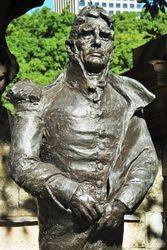
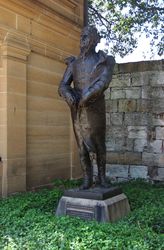
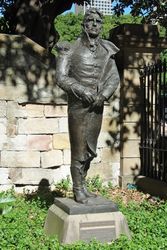
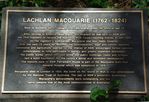
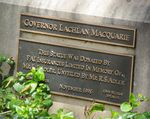
 ABC News Article
ABC News Article
